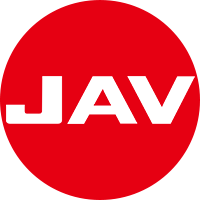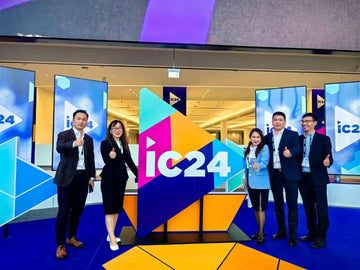
What is an Interactive Flat Panel? Simple Guide
Meet Your New Tool: The Interactive Flat Panel!
Have you ever seen a very large screen, like a giant TV, in a classroom or maybe an office? It's special because people can touch it and write on it directly with their fingers or a pen. This cool screen might be an Interactive Flat Panel!
What is an Interactive Flat Panel?
An Interactive Flat Panel (sometimes called an IFP) is like a huge, powerful tablet computer or a smart TV that you can touch and write on. It works a lot like the phones and tablets we use every day – you use touch to control it. But it's much, much bigger, designed so many people can see it and use it together. Plus, you can write and draw on it just like a whiteboard.
These newer screens are replacing older projectors and regular whiteboards in many schools and businesses because they are easier to use and can do more things. They bring familiar touch control to a giant screen, making it easy for people to interact, learn, and work together. Pretty neat, right?
What Can Interactive Flat Panels Do? Cool Features!
These giant tablet-like screens have some really useful abilities:

(a) Easy Touch Control
Just like using a phone or tablet, you can tap, swipe, zoom in, and zoom out directly on the big screen with your fingers. Many also come with a special pen (stylus) for more exact control. Even better, most support "multi-touch," meaning several people can touch and use the screen at the same time! Imagine a few students working together on a problem right on the screen, or a team planning together. It feels very natural to use.

(b) A Giant Digital Whiteboard
An IFP is like a whiteboard that never runs out of space. Teachers can write notes or explain problems, and students or colleagues can draw or take notes. You can choose different colors and pen styles. Best of all, everything written on the screen can be saved instantly as a digital file. Important notes and great ideas won't get erased and lost! You can easily share them or print them out. Some smart IFPs can even neaten up your drawings (like turning a wobbly circle into a perfect one) or change messy handwriting into typed text.

(c) Connect to your device
IFPs can easily connect to other devices like laptops, tablets, and phones. You can connect using cables (like USB or HDMI) or wirelessly (using Wi-Fi or Bluetooth). Once connected, you can show what's on your smaller screen right onto the giant IFP screen. This is perfect for showing presentations, pictures, or videos from your computer or phone so everyone in the room can see clearly.

(d) Runs Apps By Itself
Many IFPs have a built-in computer brain, often using Android or Windows systems. This means they can run software or apps all by themselves, without needing to be connected to a separate computer! Teachers can open learning software or educational games directly on the screen. In meetings, people can browse the web or use planning tools together right on the board. It's more than just a screen; it's a powerful workstation.

(e) Easy Screen Sharing
Similar to connecting devices, this is about sharing what's on screen. You can share your laptop screen to the IFP for everyone to see. Sometimes, you can also share what's on the IFP screen back to other people's devices (like student tablets or colleague laptops). This makes information flow both ways, which is great for working together.
Basically, an IFP is a multi-talented hub. It shows clear pictures like a TV, lets you interact with touch like a tablet, works as a whiteboard, connects to other devices, runs its own apps, and makes sharing easy.

Where Do You See Them?
Where do these powerful screens show up most often?
·
In Schools: This is very common. Teachers love using them because they make lessons more interesting and interactive. They can show videos, use interactive learning apps, let students solve problems right on the screen, or work together on projects. Students tend to pay more attention and learn better when they can interact directly.
·
·
In Business Meeting Rooms: IFPs are great tools for meetings. People can easily share presentations from their laptops. During discussions, teams can write notes, highlight important points, or draw diagrams together right on the screen. It's also easy to connect with remote colleagues through video conferencing shown on the large screen while sharing documents at the same time.
·
·
Other Places Too: You might see similar large touch screens in museums (showing exhibit details), shopping malls (as interactive maps), at events (showing product info), or even in some restaurants for ordering. While the main idea is the same (touch, display, write, connect), how they are used depends on the place.
·
What Are the Benefits of Using an IFP?
Why are more places using these interactive screens? Because they offer real advantages:
1. Makes Learning/Meetings More Engaging: Being able to touch, interact, and see dynamic content makes things less boring and more like a fun activity. People pay more attention when they can actively participate.
2. Better Teamwork and Sharing: Multi-touch lets several people work together on the screen at once. It's easier to share ideas, discuss things, and come up with creative solutions together.
3. Clearer and Brighter Picture: IFP screens are usually much clearer and brighter than typical projector images. They often have sharp HD or 4K resolution. You don't need to dim the lights to see them well, and people walking in front won't cast shadows.
4. Simpler and Cleaner Setup: IFPs combine the screen, touch function, and often computer/speakers into one unit ("all-in-one"). This is much simpler and tidier than setting up a projector, screen, computer, and speakers with lots of cables. Plus, no chalk dust or marker fumes!
5. Good for Different Learning Styles: People learn in different ways (seeing, hearing, doing). IFPs support all these styles by showing visuals, playing audio, and allowing hands-on touch interaction.

Common Questions You Might Have:
· (a) How is it different from my TV at home?
The biggest difference is touch and writing! You can't usually touch or write on your home TV. IFPs are designed for interaction, collaboration, and presenting, while TVs are mostly for watching shows.
· (b) How is it different from my tablet (like an iPad)?
Size and purpose! IFPs are huge screens for groups; tablets are small and personal. You use an IFP with others; you usually use a tablet by yourself.
· (c) Is it better than a Projector + Whiteboard?
For most classrooms and meeting rooms, yes. IFPs are generally: clearer and brighter (no need to dim lights), tidier (fewer devices/cables), have no shadow interference, offer smoother touch interaction, and are often easier to maintain (no bulbs to replace). Projectors might still be better for huge screen sizes, but IFPs offer a better overall experience in typical rooms.
· (d) Is it hard to use?
Usually not! If you can use a smartphone or tablet, the basic touch controls on an IFP will feel very familiar. It's designed to be easy to get started with. Advanced features might take a little learning, but basic use is simple.
Quick Comparison:
|
Feature |
Interactive Flat Panel (IFP) |
Regular TV |
Tablet |
Projector + Whiteboard |
|
Touch Screen? |
Yes! |
No |
Yes |
Sometimes (Special) |
|
Write/Draw? |
Yes! |
No |
Yes |
Yes (on whiteboard) |
|
Size |
Very Large / Large |
Large/Medium |
Small |
Screen Size Varies |
|
Main Use |
Group Interaction (Class/Meeting) |
Watching |
Personal Use |
Group Presentation |
|
Clarity |
Usually Very High |
High |
High |
Depends on Light |
|
Ease of Use |
Fairly Easy (All-in-One) |
Easy |
Very Easy |
More Complex (Setup) |

Summing Up!
So, now you know! An Interactive Flat Panel is basically a giant smart screen you can touch and write on, mounted on a wall or stand.
It has cool features like touch control, digital whiteboarding, connecting devices, running apps, and screen sharing. It's showing up in schools to make learning fun and in offices to help teams work better together.
The benefits are clear: more engagement, better teamwork, bright and clear visuals, and a simpler setup than older projector systems. While it looks like a TV or a giant tablet, it's built for group interaction. And don't worry, they are designed to be easy to use.
Next time you see one of these big interactive screens, you'll know exactly what it is! Keep an eye out – they might be making learning and working better near you soon.





0 comments